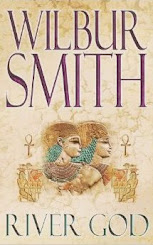When it wasn't attempting to vanish, my subject refused to look at the lens, preferring to squirm or roll around - probably immediate priorities. After all, it wasn't human.
On a hunt for two bakeries: Bake Plan and Dotty's, I stumbled upon the Purradise Cat Café after finding Dotty's closed for the day; the doors are shut at 5pm. Needing a break, I climbed the stairs to the café on the first floor. No shoes are allowed after the foyer.
Purradise had, I thought, more felines than another similar establishment at SS15 in Subang Jaya. Seems all of them are rescued strays (one of them apparently just came in and stayed), and patrons are allowed to adopt any kitty they fancy. There must've been about twelve, and all of them are named.
For RM15, patrons get one drink and an hour in the café; an additional RM3 is charged for every 15 minutes afterwards. Anything else, including food and drink, is also extra. Wanna spend a full day there? It's RM39, plus a drink. The charges and time limits were imposed to keep the number of patrons low, I was told.
From their Facebook page:
Purradise Cat Café is a social enterprise with an aim to support and improve animal welfare and their holistic wellbeing. Our ultimate goal is to foster rescue cats and socialize them to a loving environment before finding them their furrever homes. Purradise Cat Café operates within a self-sustaining business model, where proceeds from the café will be reinvested into supporting pet fostering and re-homing initiatives.
Of course, being a cat person, I wasn't really into the hot chocolate I picked. All I cared about were all the furry four-legged critters that owned the place.
An atsroturfed part near the window was done up to look like a picnic spot, with tables and beanbags. The main area was split between a park and sitting area, with a huge table in between. Ledges, ramps and shelves allowed the cats to move and leap around as cats do.
Some of these ledges were made to look like clouds and hot air balloon baskets, so that the kitties can lounge or sleep on them, away from prying eyes. It is as cat-friendly a place as can be.
Here's a cat. I think its name is "Yuki". It's the only skinny-ish white cat with a collar.
Here's another cat. Methinks this be "Patches" in the foreground - also easy to ID, as it's the only cat with black and white patches. I'm not sure (and didn't bother to find out) who the other cat is.
Here's another cat. I gave up trying to ID individuals early on. They're all SQUEE.
And another cat.
And another. This one was perched on one of the narrow wooden planks that bridged one side of the café with the other.
A couple more.
More cats by the kitchen door. They know there's something nice behind it. Which is why they're not allowed inside.
The photo collage of the current residents didn't help. As far as I was concerned they were all "Cat". And it seems the collage wasn't up to date.
I hadn't planned on dropping by, so I didn't manhandle any of the cats. Not that I knew how. And I was drinking chocolate, which is, along with tea and coffee, lethal to cats and some animals. I didn't spill anything, but I wanted to be careful.
So, yes, my (okay) hot chocolate remained mostly ignored throughout my stay, as I stalked the resident cats making their rounds and naps around Purradise. The beverage didn't leave much of an impression. It came in a white takeaway sippy cup with a black cover and it was really HOT.
I was more impressed by the cats and how the place was done up to accommodate these cuddly killing machines. Left alone, cats can kill a lot of tiny animals. Don't just take The Oatmeal's word for it.
Speaking of which, the café has this.
Exploding Kittens is a card game The Oatmeal had a hand in making. This Kickstarter project exceeded the goal of US$10,000 in eight minutes and racked up over US$8.5 million in pledges by the end of the campaign.
No, I didn't try the game. Nobody to play it with.
I thought it was a nice touch.
I was also reluctant to leave. But it was dusk and I had to go home. Another day at work awaited. At least I was relaxed enough to go back on the road again.
Then I encountered a traffic jam and I wished I stayed back a while longer. It would've been worth the additional RM12.
Purradise is more of a petting zoo and chill-out place than a café, and that's fine. I was already sold on the idea after visiting the Subang cat café. This place also has a mission I'm all for.
When one can't be bothered with road trips outstation or local hotel-based mini-vacations, an afternoon with a dozen or so cats and a beverage and a snack in this corner of Taman Tun Dr Ismail is just as relaxing.
If you aren't allergic to or afraid of cats.
Purradise Cat Café
1st Floor, No. 24AJalan Tun Mohd Fuad 2
Taman Tun Dr Ismail
60000 Kuala Lumpur
Tue-Fri: 2pm-10pm
Sat-Sun: 11am-11pm
Closed on Mondays
+603-2389 0976
Web site | Facebook page
Categories:
Uncategorised





































